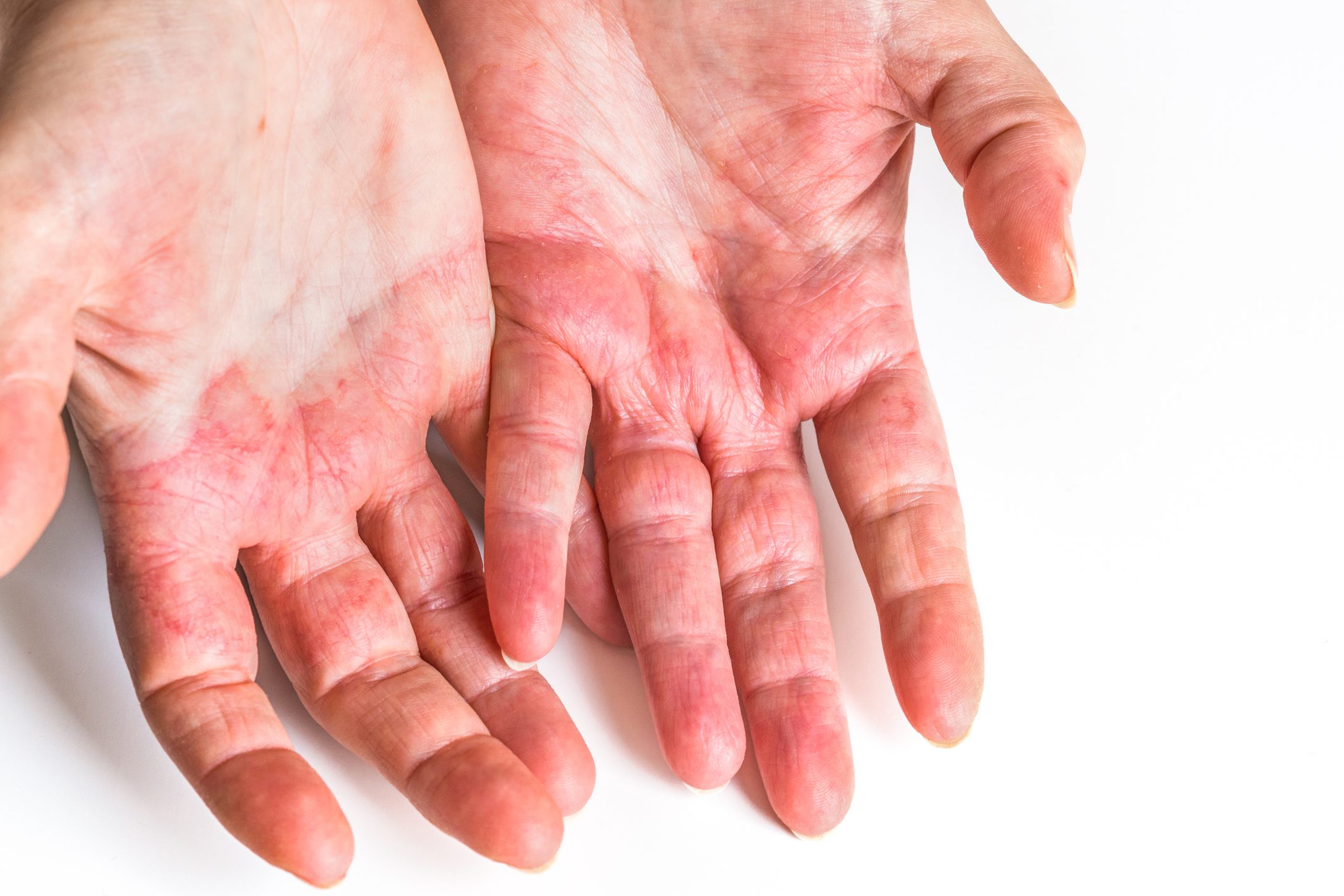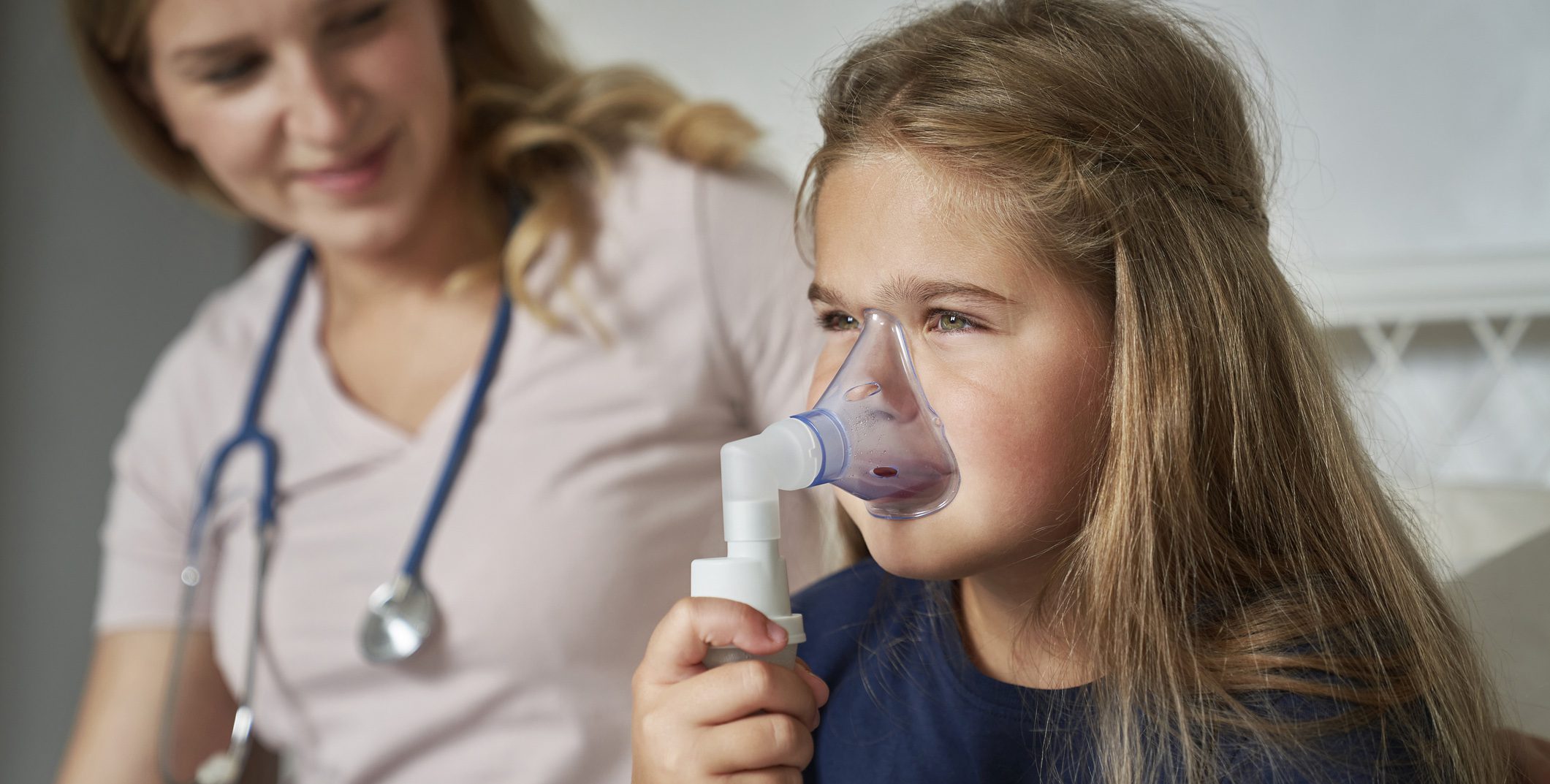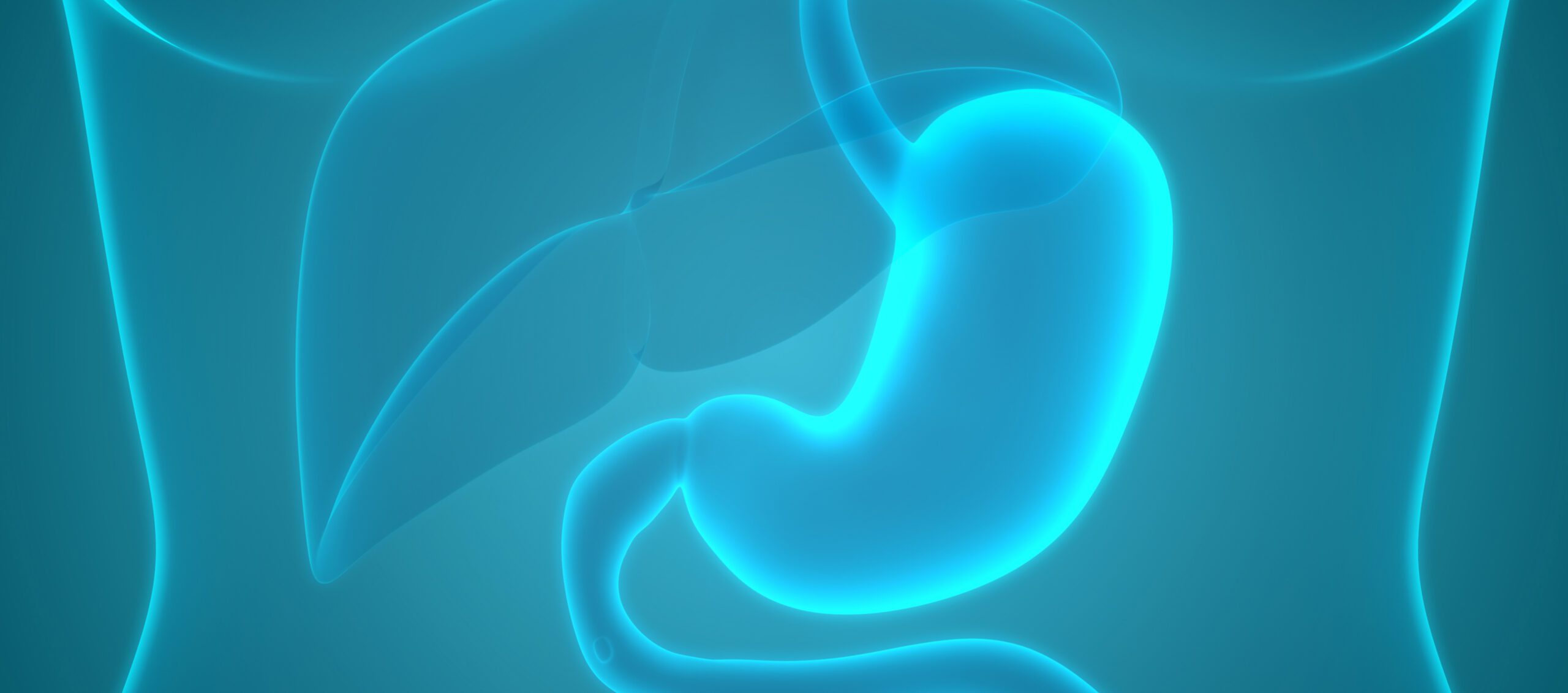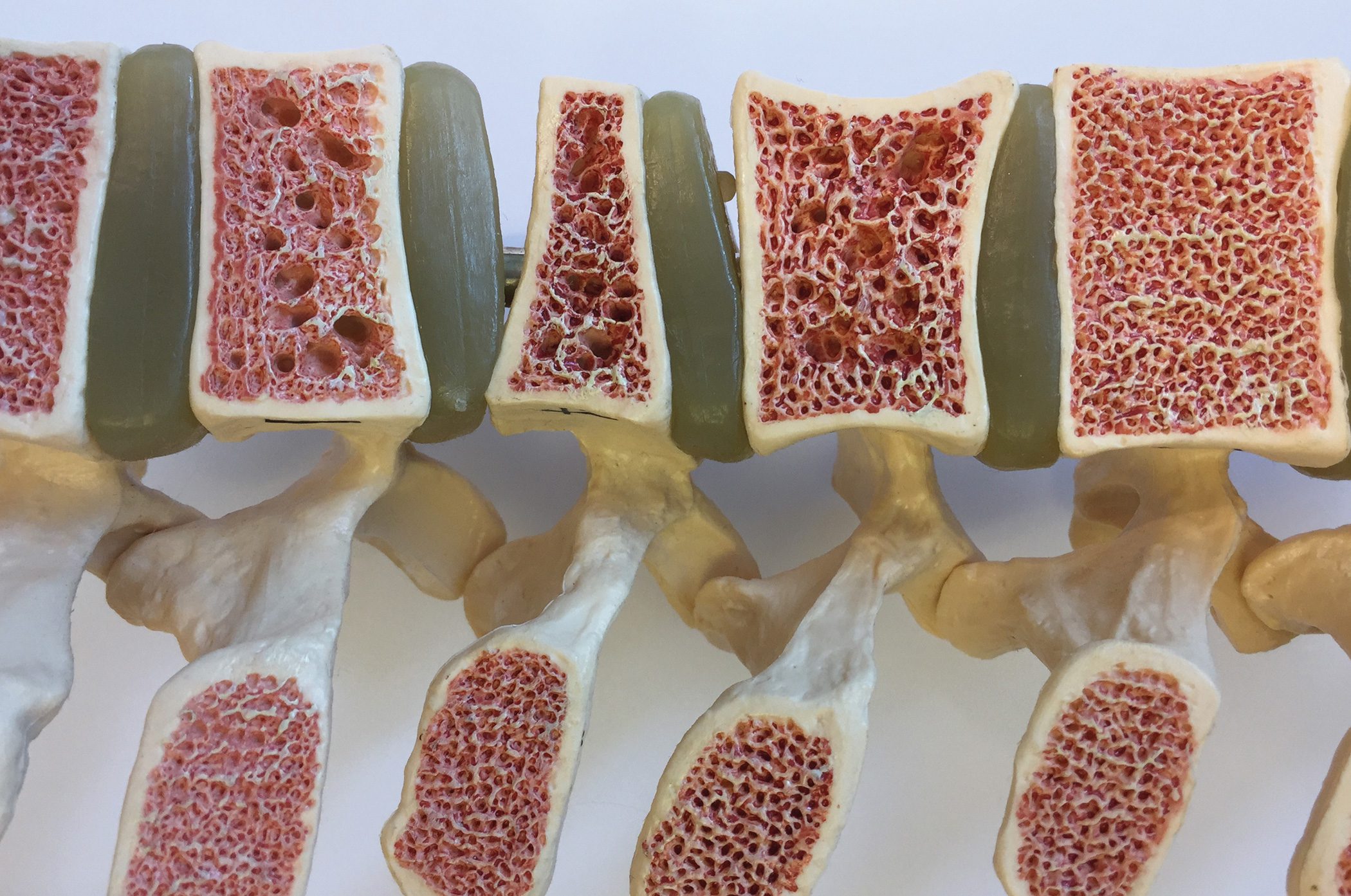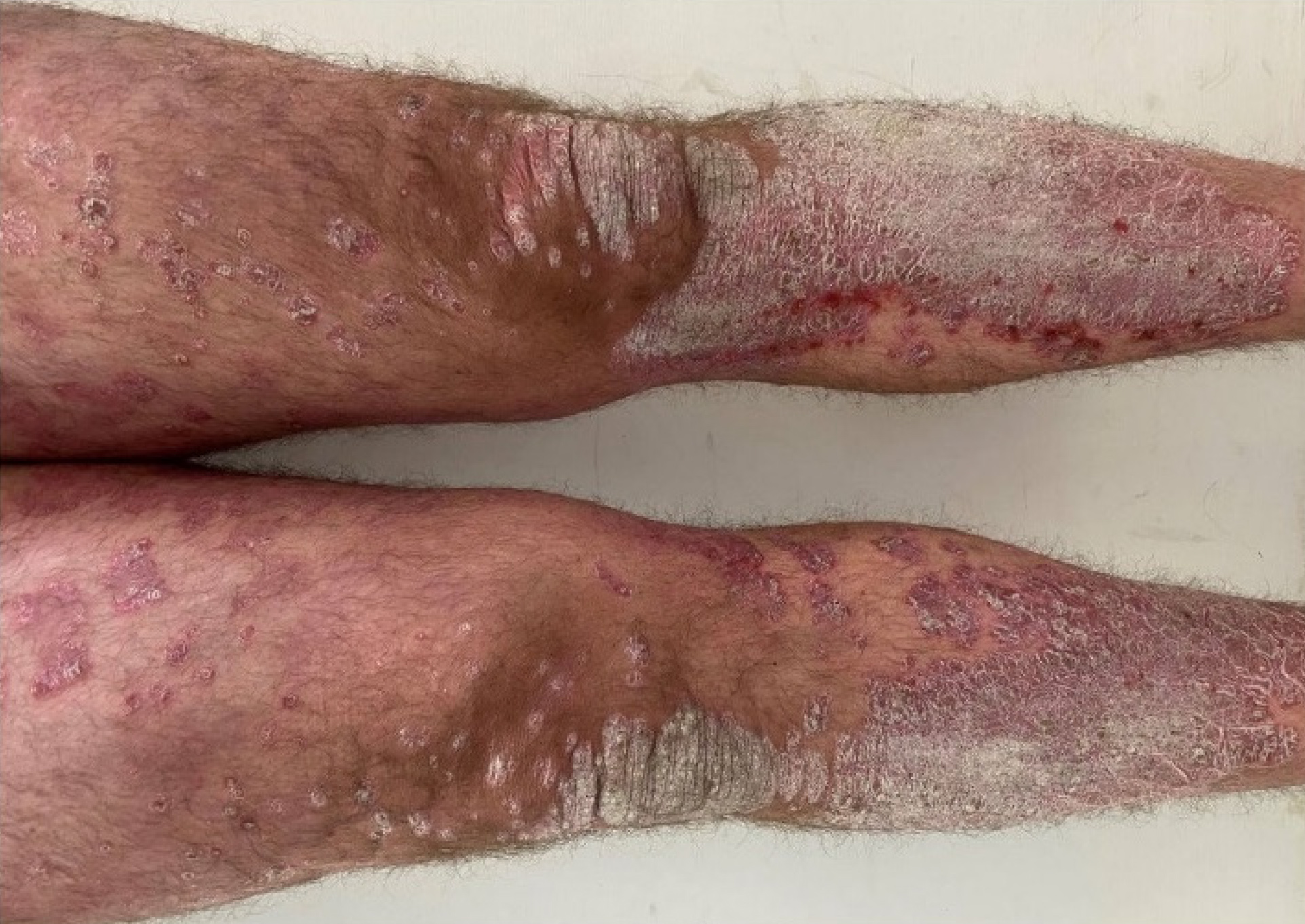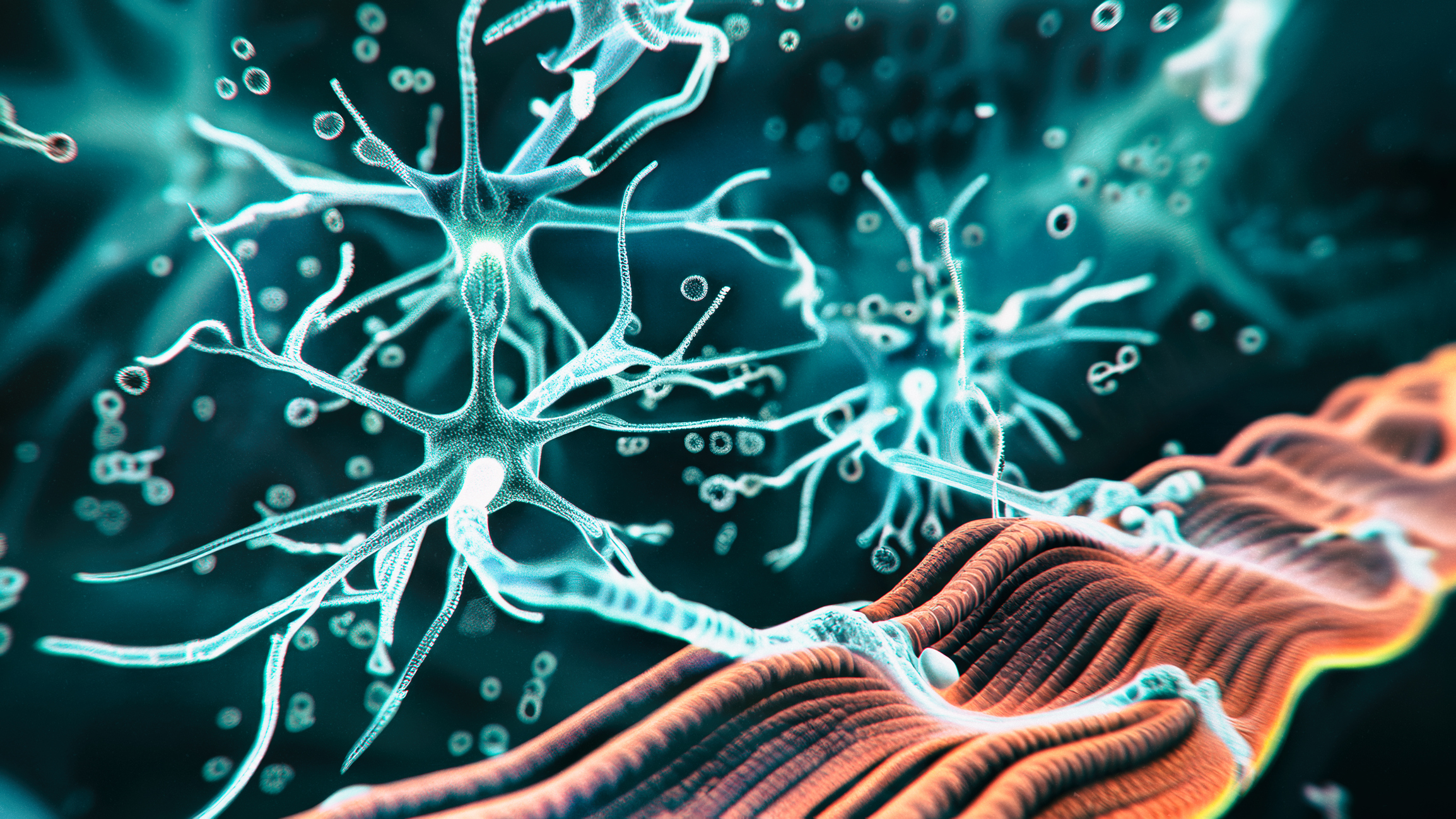Rare diseases in Switzerland are defined by a prevalence of less than 1:2000**. There are over 1000 recognized rare skin diseases in dermatology. The “RareSkinCH” network connects reference centers and patient organizations in order to improve the care situation for those affected by rare skin diseases.
The “RareSkinCH” network is a commission of the SGDV and is part of “Kosek”, the national coordination center for rare diseases [1]. “RareSkinCH” promotes collaboration between hospitals, healthcare professionals and patient organizations [2]. The aim is to optimize the overall management of patients with rare skin diseases. The network strives to achieve the following goals:
- correct and early diagnosis,
- Access to appropriate diagnostic tests,
- medical care in centers with broad expertise,
- Access to new therapies, rehabilitation and supportive and psychosocial care.
The most important groups of rare skin diseases include: Ichthyoses, palmoplantar keratoderma, ectodermal dysplasia, epidermolysis bullosa, pigmentary anomalies (e.g. albinism), vascular anomalies (e.g. lymphedema), congenital nevi, connective tissue diseases, rare tumor diseases (e.g. cutaneous lymphomas), certain autoimmune diseases, some autoinflammatory syndromes and severe toxic-immunological skin reactions [2].
** FOPH: National concept for rare diseases. www.bag.admin.ch/bag/de/home/strategie-und-politik/
politische-auftraege-und-aktionsplaene/nationales-konzeptseltene-krankheiten.htm, (last accessed 05.06.2024).
Examples from everyday clinical practice
The group of cornification disorders is very heterogeneous and can be divided into around 100 diseases. These include palmoplantar keratoses, ichthyoses and keratoses which, in contrast to palmoplantar keratoses, are not limited exclusively to the groin skin of the palms of the hands and soles of the feet and can present as hyperkeratosis or dyskeratosis. Erythrokeratoderma, which is characterized by erythematous and scaly foci, is also a keratinization disorder [3].
32-year-old female patient with hereditary epidermolytic palmoplantar keratosis: The patient presented to the polyclinic with painful hyperkeratotic plaques and rhagades on the palms and soles [6]. The family history was positive. On the palmoplantar side, there were striated, yellowish to brownish hyperkeratoses in pressure-exposed areas. Genetic testing revealed a previously undescribed heterozygous pathogenic variant in exon 4 of desmoglein-1 (DSG1) [c.349C>T, p.(Arg117*)]. Histopathology revealed orthohyperkeratosis and irregular acanthosis with a pronounced stratum granulosum and acantholysis. Electron microscopy showed clearly elongated basal keratinocytes and numerous tonofilaments. DSG1 is mainly expressed in the suprabasal layers of the epidermis and mucosa and is essential for the intercellular adhesion of desmosomes. Isolated mutations in DSG1 lead to acantholysis with consecutive hyperkeratosis on the palms of the hands and soles of the feet, particularly in areas subject to mechanical stress. The treatment options consist of non-mechanical keratolysis and pressure relief. Systemic retinoids must be used with caution in epidermolytic palmoplantar keratoses, as symptoms may worsen during treatment.
| Important facts about rare dermatoses |
| Rare mono- and polygenetic dermatoses represent a significant group of diseases with over 1000 entities [8]. Over the past two decades, their research has become an important focus in dermatology [9]. |
| Over 70% of rare diseases are caused by single gene defects [10,11]. |
| There are an increasing number of registries and networks in which data from patients with rare diseases are collected [8,11]. At European level, these include the EU Biomed2 Geneskin project, Orphanet and the ERN Skin (European Reference Network on Rare and Undiagnosed Skin Disorders). |
| Genodermatoses caused by non-sense mutations can now be treated with read-through inducing agents such as aminoglycosides [9]. In contrast, genodermatoses associated with gain-of-function variants can be treated by blocking activated signaling pathways [8]. |
The mucinoses are another heterogeneous group of rare diseases. These are deposition dermatoses whose common feature is the pathological increase of mucin, a gel-like mixture of acidic glycosaminoglycans, in the connective tissue. The gel-like consistency results from the special property of acidic glycosaminoglycans to bind more than 1000 times their own weight in water. The five main mucinoses are generalized myxedema, pretibial myxedema, lichen myxoedematosus, reticular erythematous mucinosis and scleredema [4,5].
52-year-old patient with scleromyxedema (Arndt-Gottron syndrome): The patient presented to the outpatient clinic due to disseminated papules that had been present for one year [7]. Previous treatment with acitretin had shown no improvement in the findings. No chronic diseases were known. B symptoms were not present. The patient reported a nicotine abuse of 30 pack years. Clinically, masses of lenticular papules with a waxy appearance were seen on the neck, the extensor sides of the arms and backs of the hands and the extensor sides of the fingers. Histologically, interstitial accumulations of mucin surrounded by fibroblasts were seen in the upper to deep dermis. Subtle perivascular lymphocytic infiltrates were found. Further diagnostics revealed a monoclonal gammopathy IgG type Lambda. From a hematological point of view, there was initially no need for action in this regard. The chest X-ray and abdominal ultrasound showed no abnormalities. Systemic therapy with isotretinoin 20 mg for 6 months was initiated. During treatment, the local findings progressed with increasing skin changes in the area of the trunk and, in the meantime, involvement of the glabella and eyebrows also became apparent. It was therefore decided to treat the patient with intravenous immunoglobulins at a dosage of 2 g/kg bw spread over 3 days. After just one treatment cycle, the skin changes began to regress. Arndt-Gottron scleromyxedema is a cutaneous mucinosis characterized by sclerodermoid papules and is usually associated with monoclonal gammopathy. Complications can include damage to the cardiovascular system, gastrointestinal tract, lungs, kidneys and central nervous system.
Literature:
- National Coordination of Rare Diseases (Kosek), www.kosekschweiz.ch, (last accessed 03.06.2024)
- «Seltene Hautkrankheiten», www.derma.swiss/patienten/seltene-hautkrankheiten, (last accessed 03.06.2024)
- «Keratosis palmoplantaris vom Typ Vörner: Klinische und formalgenetische Untersuchungen», https://archiv.ub.uni-marburg.de/diss/z2000/0196/pdf/dhb.pdf, (last accessed 03.06.2024)
- Hoffmann JHO, Enk AH: Skleromyxödem. JDDG 2020; 18(12): 1449-1468. https://onlinelibrary.wiley.com/doi/pdf/10.1111/ddg.14319_g.
- Calonje E, et al.: Degenerative and metabolic diseases. In: Calo nje E: McKees’s Pathology of the Skin. 5 ed.: Elsevier, 2020: 621–622.
- Koschitzki K-T, et al.: Hereditäre epidermolythische Palmoplantarkeratose (PPK) aufgrund einer Desmoglein-1-Mutation, P077. JDDG 2024; 22, Issue S1: 1–40.
- Mann C, Butsch F, Staubach-Renz P: Erfolgreiche Therapie eines Scleromyxoedems mit Intravenösen Immunglobulinen, P074. JDDG 2024; 22, Issue S1: 1–40.
- Hohl D: Was verbindet seltene Hautkrankheiten mit unserer täglichen Praxis? Swiss Medical Forum 2023; 23(12): 978–979.
- Sprecher E: What do rare and common have in com mon? Br J Dermatol 2022; 187(3): 279–280.
- Ferreira CR: The burden of rare diseases. Am J Med Genet A 2019; 179(6): 885–892.
- Neuanfang Wakap S, et al.: Estimating cumulative point prevalence of rare diseases: analysis of the Orphanet database. European Journal of Human Genetics 2020; 28(2): 165–173.
DERMATOLOGIE PRAXIS 2024; 34(3): 43–44 (published on 14.6.24, ahead of print)






